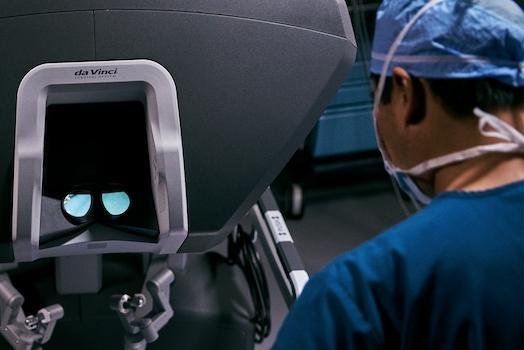Robotic Recurrent
Get back to what matters most
Every year, surgeons in the U.S. perform 350,000–500,000 ventral hernia repairs. A ventral hernia occurs when tissue pushes through an opening in the abdominal muscles, creating a visible bulge or tender area. Depending on its location, it may be called an incisional hernia (at a prior surgery site), an umbilical hernia (near the belly button), or an epigastric hernia (above the belly button).
Understanding your options
While doctors may recommend watchful waiting in some cases, surgery is the only way to repair a hernia. Surgeons reposition the muscle and often reinforce it with surgical mesh to lower the risk of recurrence. Some hernias require more complex reconstruction of the abdominal wall. Repair can be done through open surgery, which uses a larger incision, or minimally invasive methods. Laparoscopic and robotic-assisted procedures use small incisions, cameras, and specialized tools to improve precision and may support faster recovery.
How da Vinci works
Surgeons can perform ventral hernia repair using da Vinci technology. With da Vinci, your surgeon sits at a console next to you and operates using tiny instruments through a few small incisions.
A camera provides a high-definition, 3D magnified view inside your body. Every hand movement your surgeon makes is translated by the da Vinci system in real time to bend and rotate the instruments with precision.
It’s important to remember that Intuitive does not provide medical advice. After discussing all options with your doctor, only you and your doctor can determine whether surgery with the da Vinci system is appropriate for your situation. You should always ask your surgeon about his or her training, experience, and patient outcomes.
Why surgery with da Vinci?
Data from a nationally based registry suggest potential benefits of ventral hernia repair using da Vinci technology include:
- Patients who underwent a complex ventral hernia repair with da Vinci stayed in the hospital for less time than patients who underwent an open procedure.
- Patients who had a da Vinci procedure for non-complex ventral hernia repair stayed in the hospital for less time than patients who had a laparoscopic repair.
- Patients who had a ventral hernia repair with da Vinci went to their doctor’s clinic fewer times within the first 30 days after their procedure than patients who underwent an open procedure.
All surgery involves risk. You can read more about associated risks of hernia repair here.
Our Locations
Choose your preferred location
Contact with us!
Your Health, Your Recovery — Just a Message Away


